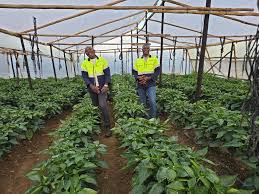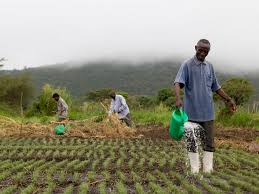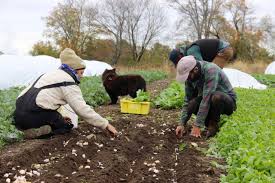The scope of initiating a project, which is the first step, is very wide. It involves identifying and formulating projects, appraising them, and securing formal approval from the competent authority. A detailed account of project identification, formulation, cost estimation, and appraisal is discussed below.
Read Also: Bell Flowers – All You Need to Know
Project Identification

Identifying a new worthwhile project is a complex task, requiring careful study from many different angles. The following are some of the sources from which new project ideas may emerge:
1. Performance of Existing Industries: The performance of existing industries provides a good indication of the health of a particular industry. An analysis of the profitability and break-even points of different industries offers adequate information about the financial health of various sectors.
However, present performance alone should not dictate decisions. One must be sharp enough to assess the business cycle stage that each industry is in. For instance, a sector performing well may have already crossed its peak and fallen into the decline stage of its cycle.
Investing in such an industry would be disastrous. Conversely, a sector that is not performing well may have the potential for rapid growth if it is still in the early stages of its business cycle. These factors must be analyzed carefully before making a final decision.
2. Availability of Raw Materials: The easy availability of good-quality raw materials at lower prices is a clear indicator that projects utilizing these materials can be initiated. For example, in areas where agriculture is predominant, and agricultural produce like cereals, vegetables, and fruits are available in abundance, the potential for establishing food processing industries is high. Similarly, the availability of minerals may lead to chemical industries.
3. Availability of Skilled Labour: Based on the locally available skilled labor force, suitable industries that can effectively use this manpower may be identified.
4. Import/Export Statistics: Import/export statistics reveal untapped potential. A high ratio of imports for a specific product, along with an upward trend, signals an opportunity for local production to substitute imports. Similarly, a high export ratio and increasing export trend indicate strong export potential for that product.
5. Price Trends: The trend in product or service prices indicates the demand-supply relationship. If the general price level has been rising in recent years, and the price of a particular product has increased faster than the overall price level, this suggests a demand-supply gap. Further study is needed to determine the extent of the gap.
6. Data from Various Sources: Government, banks, financial institutions, consultancy organizations, manufacturers’ associations, export promotion councils, research institutions, and international agencies publish data and statistics that highlight prospective ventures. Studying the financial performance and balance sheets of existing companies is also useful in identifying sectors with opportunities for new investments.
7. Research Laboratories: Research laboratories engaged in developing new products or processes can open up new avenues for commercial exploitation. However, caution is necessary before moving to large-scale production of laboratory-proven products. It is crucial to ensure that laboratory conditions can be replicated in production lines. Failure to do so may lead to large-scale production failure.
8. Consumption Abroad: Entrepreneurs willing to take higher risks may identify projects that involve manufacturing products or providing services that are new to the country but widely used abroad. Thus, observing consumption trends abroad helps identify projects with export potential.
9. Identifying Unfulfilled Psychological Needs: In well-established, multi-brand product groups, there may be unmet psychological needs, even though consumers’ physical needs have been satisfied. Consumer goods like cosmetics, bathing soaps, and toothpaste fall into this category. The introduction and acceptance of new products in these groups indicate unfulfilled psychological needs.
10. Plan Outlays and Government Guidelines: The government plays a significant role in shaping the economy. Its plan outlays in different sectors provide useful pointers toward potential investment opportunities, highlighting the demand for goods and services across various economic sectors.
The Department of Industrial Development, Government of Nigeria, publishes annual Guidelines to Industries, offering valuable information on identifying investment scopes. This publication details production performance across sectors, licensed capacity, future export potential, and industrial structure.
11. Analysis of Economic and Social Trends: An analysis of economic and social trends helps in identifying and forecasting the demand for various goods and services. For example, growing interest in leisure activities suggests investment opportunities in recreation, resorts, and rest-houses.
Similarly, the increasing value placed on time indicates growing demand for fast foods, high-speed vehicles, better transportation options, and ready-made garments.
12. Possibility of Reviving Sick Units: In every economy, some industries become sick or weak. However, industries that face internal issues, such as mismanagement, may still have the potential for revival.
An entrepreneur with the right skills may take over a sick unit, inject capital, and provide the complementary inputs required to turn the business around. Corrective actions like restructuring the organization or modernizing technology may bring an ailing industry back to life.
Read Also: Winter Aconite Flowers (Eranthis hyemalis): All you need to know
The Identification Test

A proposal is considered to have passed the identification test and is ready for detailed preparation when:
1. Major options and alternatives have been identified, and some initial choices made.
2. Principal institutional and policy issues affecting project outcomes have been identified and are considered solvable.
3. The selected project options are likely to be justified based on rough estimates of costs and benefits.
4. There is reasonable confidence that the project will receive adequate support from relevant political authorities, stakeholders, and beneficiaries.
Do you have any questions, suggestions, or contributions? If so, please feel free to use the comment box below to share your thoughts. We also encourage you to kindly share this information with others who might benefit from it. Since we can’t reach everyone at once, we truly appreciate your help in spreading the word. Thank you so much for your support and for sharing!
Read Also: Everything You Need to Know About Yarrow






